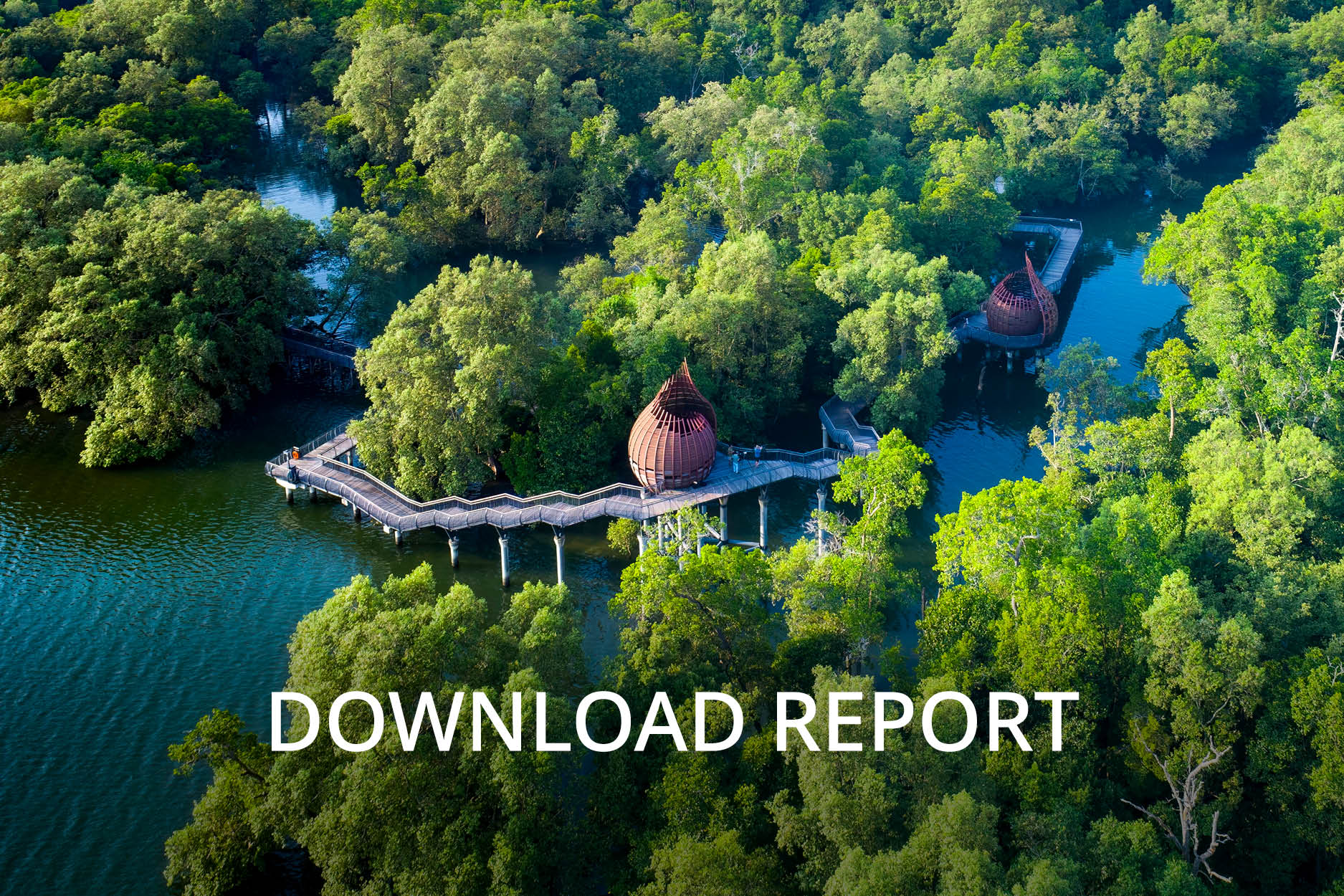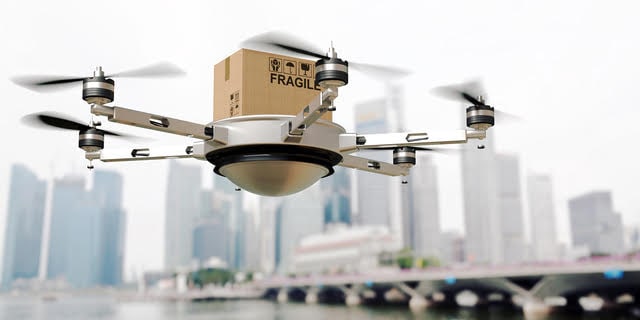From Warehouse to Your House: A Parcel’s Delivery Journey
From Warehouse to Your House: A Parcel’s Delivery Journey
Update: This article has been updated to include developments on PSA International's automated guided vehicles.
From checkout to your house, here’s how a package arrives at your doorstep with the help of driverless vehicles and other cutting-edge technology.

A picker going through the shelves to look for your online purchases — no robots involved...yet
When it comes to online shopping, we have certainly come a long way. Legend has it that the first online purchase was a CD of Sting’s Ten Summoner’s Tales in 1994. These days, it seems as if there is nothing you cannot buy online — from the latest fashion apparel and tech gadgets to Nicolas Cage pillowcases.
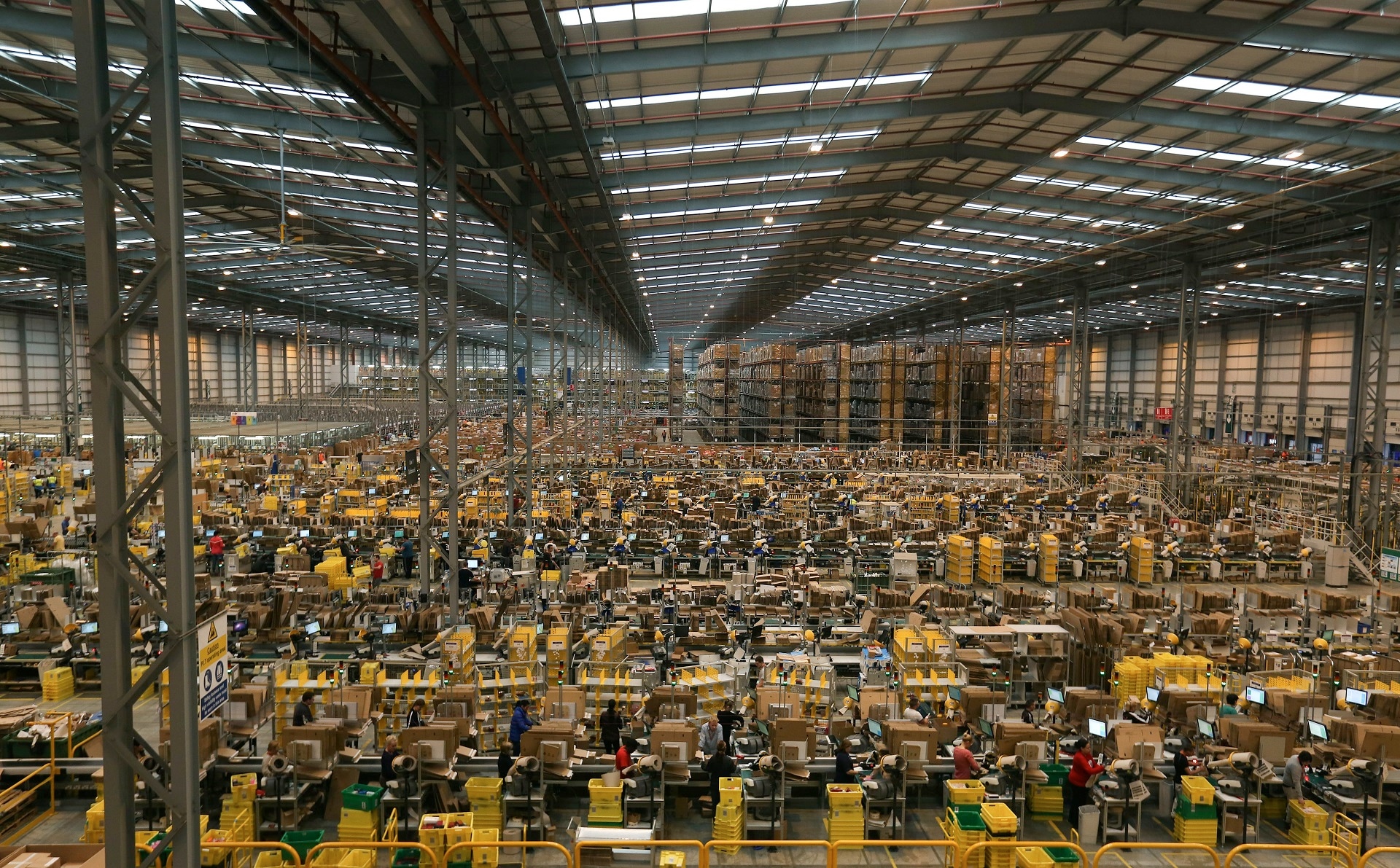
This is the size of an average Amazon fulfilment centre. To give you a sense of scale, those black shapes in
the foreground are people sorting through Black Friday and Cyber Monday purchases
As much as we love online shopping, have you ever wondered what happens after we click the “checkout” button? Here’s how your parcel goes from a warehouse to your doorstep and arrives on time.
Step 1: After Checkout
Online marketplaces like Amazon, Lazada and Taobao have fulfilment centres (a fancy name for warehouses) all over the world. Once you click the “checkout” button, back-end systems will kick in to fill your order.
By analysing historical purchase data and other information, online marketplaces can tell which items are more popular in specific regions. For example, if data shows that a Taylor Swift album is more popular in Singapore than, say, India, then fulfilment centres in Singapore will stock more of said CDs. This “smart” stocking of fulfilment centres allows orders to be filled much faster.
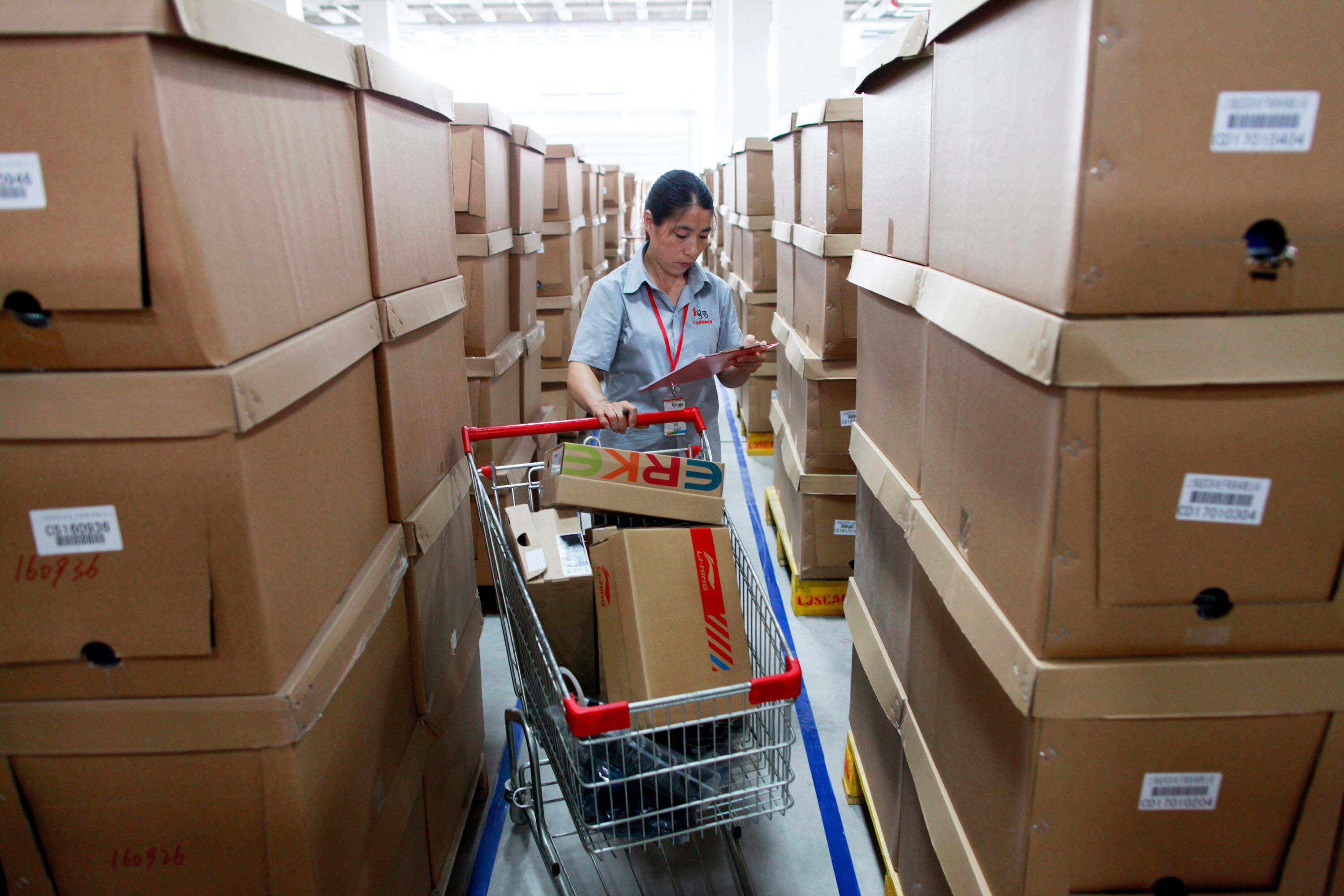
Step 2: Sort Things Out
Enter actual human beings. Employees are in charge of picking the right items off the shelves — but not without the help of technology. Most fulfilment centres arrange their products based on specific algorithms, so the most popular products are shelved closer together — even if they are not from the same product category.
For example, a particularly popular dishwasher might be right next to a pile of chocolate bars. Even if the arrangement does not make logical sense to the untrained eye, it actually allows employees to quickly grab items off the shelves and send them off for delivery.
These robots can sort at least 200,000 packages a day
Step 3: Out for Delivery
The majority of your Amazon and Taobao deliveries are still performed by humans, from packing your purchases into boxes to stowing them into delivery trucks. That’s incredible, considering that Amazon alone is said to ship 608 million packages each year — that’s roughly 1,200 packages since you started reading this article.
For more high-tech options, online marketplaces have yet to perfect self-driving delivery trucks but they’re close. Amazon is looking to drones to deliver packages. If it’s your wedding anniversary and you’ve forgotten to get your spouse a gift, Amazon wants a drone to deliver it in 30 minutes flat within cities. Though few details have been released thus far, one can only hope.
Find out how Amazon became the massive online retailer that it is today
Step 4: The Trail to Your Doorstep
When parcels are too big to be flown, they go by sea — and that’s where ports play an important role. Port terminals, too, are increasingly armed with sophisticated tech to make sure things get to where they need to go, on time.
PSA International, for example, moves over 150 containers per hour on average for mega vessels in Singapore, and the port operator is trialling several technologies to streamline the entire process. One such innovation is its fleet of battery-powered automated guided vehicles, which transports containers between the quayside and the container yard more quickly than vehicles with human drivers.
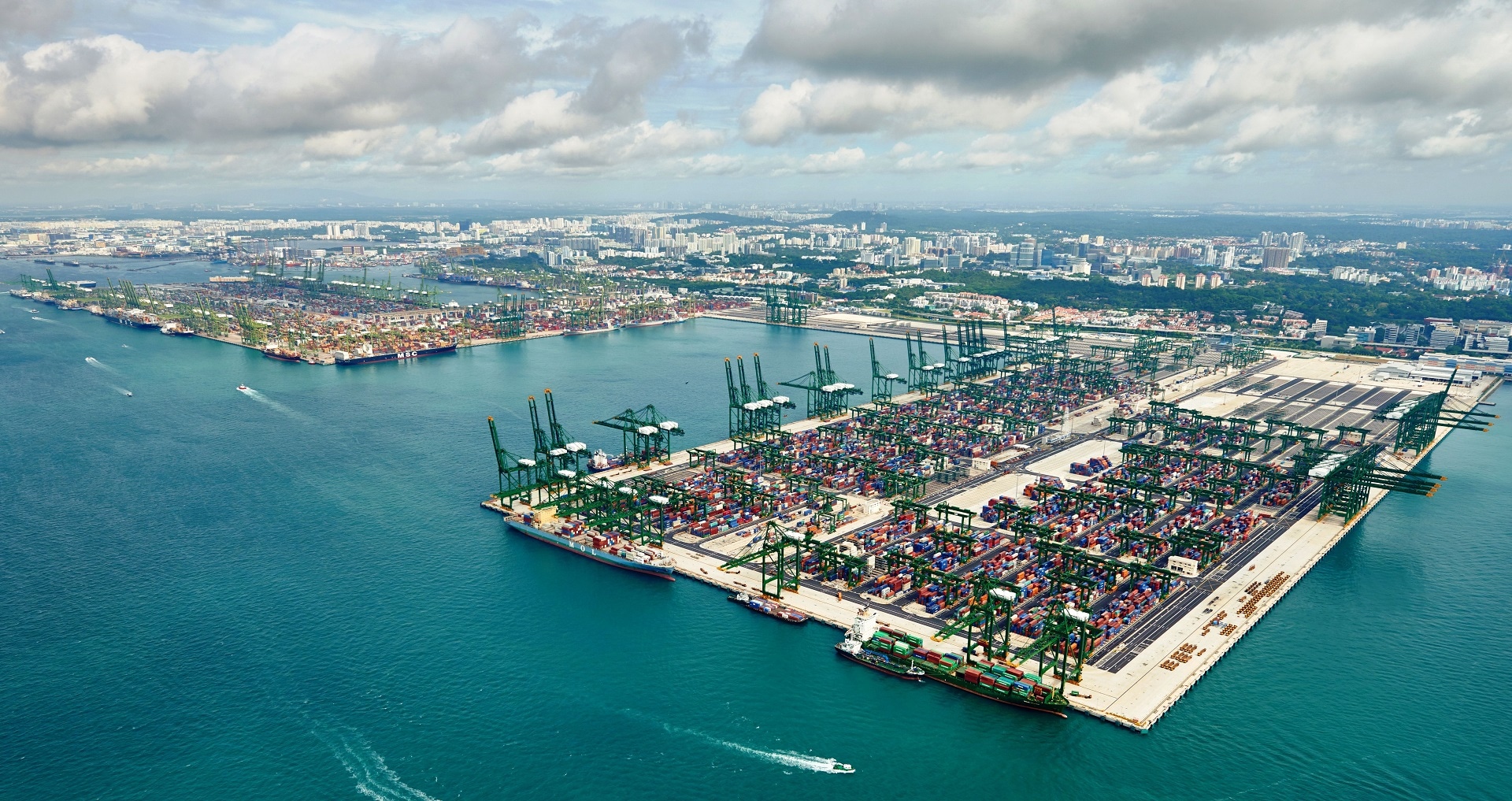
Singapore is not known as one of the busiest ports in the world for nothing (Photo by PSA International)
Currently being used at Pasir Panjang Terminal, the AGVs are bidirectional. This means they can navigate their way through orderly rows of containers without wasting time on three-point turns to change direction. (If only cars could move like them in car parks.)
And get this: the fully battery-powered vehicles take just 20 minutes to charge for five hours of operation. In the time it takes to fully recharge an iPhone X, an AGV would have enough juice to transport shipping containers for more than half a day.
These driverless vehicles have been in Singapore since the '90s
PSA International also recently announced its collaboration with Pacific International Lines and IBM Singapore to test a blockchain-based supply chain system, which automates the flow of documents between different parties.
For port operators like PSA International, blockchain-based systems could be game changers, since traditional paper trails can require sign-offs from up to 30 unique organisations even for simple shipments.
Blockchain not only cuts down on delays due to paperwork, it also reduces errors, minimises courier costs and improves inventory management.
.jpg)
A sneak peek at PSA’s brand-new port in Tuas once it’s complete (Artist’s impression by PSA International)
Said Tan Chong Meng, Group CEO of PSA International, “The port is one of most important points of convergence in global supply chains. Being one of the world’s largest port operators gives PSA the unique platform to instigate and support game-changers in our industry.”
All of this translates to one simple result: packages get to you faster and more reliably.
Temasek is an investor in PSA International and Lazada Group.
